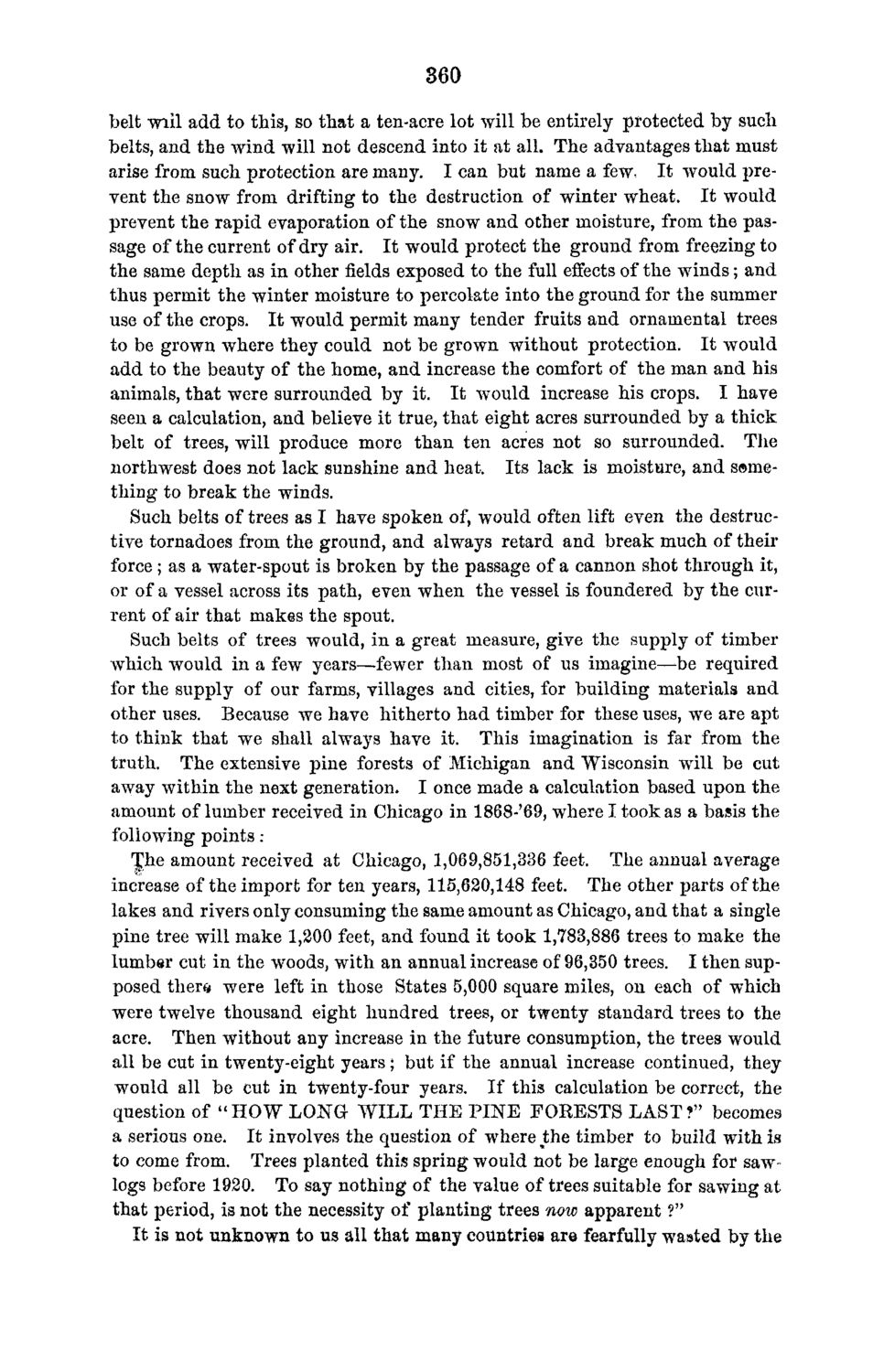| |
| |
Caption: Board of Trustees Minutes - 1870
This is a reduced-resolution page image for fast online browsing.

EXTRACTED TEXT FROM PAGE:
360 belt will add to this, so that a ten-acre lot will be entirely protected by such belts, and the wind will not descend into it at all. The advantages that must arise from such protection are many. I can but name a few, It would prevent the snow from drifting to the destruction of winter wheat. It would prevent the rapid evaporation of the snow and other moisture, from the passage of the current of dry air. It would protect the ground from freezing to the same depth as in other fields exposed to the full effects of the winds; and thus permit the winter moisture to percolate into the ground for the summer use of the crops. It would permit many tender fruits and ornamental trees to be grown where they could not be grown without protection. It would add to the beauty of the home, and increase the comfort of the man and his animals, that were surrounded by it. It would increase his crops. I have seen a calculation, and believe it true, that eight acres surrounded by a thick belt of trees, will produce more than ten acres not so surrounded. The northwest does not lack sunshine and heat. Its lack is moisture, and samething to break the winds. Such belts of trees as I have spoken of, would often lift even the destructive tornadoes from the ground, and always retard and break much of their force; as a water-spout is broken by the passage of a cannon shot through it, or of a vessel across its path, even when the vessel is foundered by the current of air that makes the spout. Such belts of trees would, in a great measure, give the supply of timber which would in a few years—fewer than most of us imagine—be required for the supply of our farms, villages and cities, for building materials and other uses. Because we have hitherto had timber for these uses, we are apt to think that we shall always have it. This imagination is far from the truth. The extensive pine forests of Michigan and Wisconsin will be cut away within the next generation. I once made a calculation based upon the amount of lumber received in Chicago in 1868-'69, where I took as a basis the following points: T£he amount received at Chicago, 1,069,851,336 feet. The annual average increase of the import for ten years, 115,620,148 feet. The other parts of the lakes and rivers only consuming the same amount as Chicago, and that a single pine tree will make 1,200 feet, and found it took 1,783,886 trees to make the lumber cut in the woods, with an annual increase of 96,350 trees. I then supposed thera were left in those States 5,000 square miles, on each of which were twelve thousand eight hundred trees, or twenty standard trees to the acre. Then without any increase in the future consumption, the trees would all be cut in twenty-eight years; but if the annual increase continued, they would all be cut in twenty-four years. If this calculation be correct, the question of "HOW LONG WILL THE PINE FORESTS LAST?" becomes a serious one. It involves the question of where the timber to build with is to come from. Trees planted this spring would not be large enough for sawlogs before 1920. To say nothing of the value of trees suitable for sawing at that period, is not the necessity of planting trees now apparent ?" It is not unknown to us all that many countries are fearfully wasted by the
| |